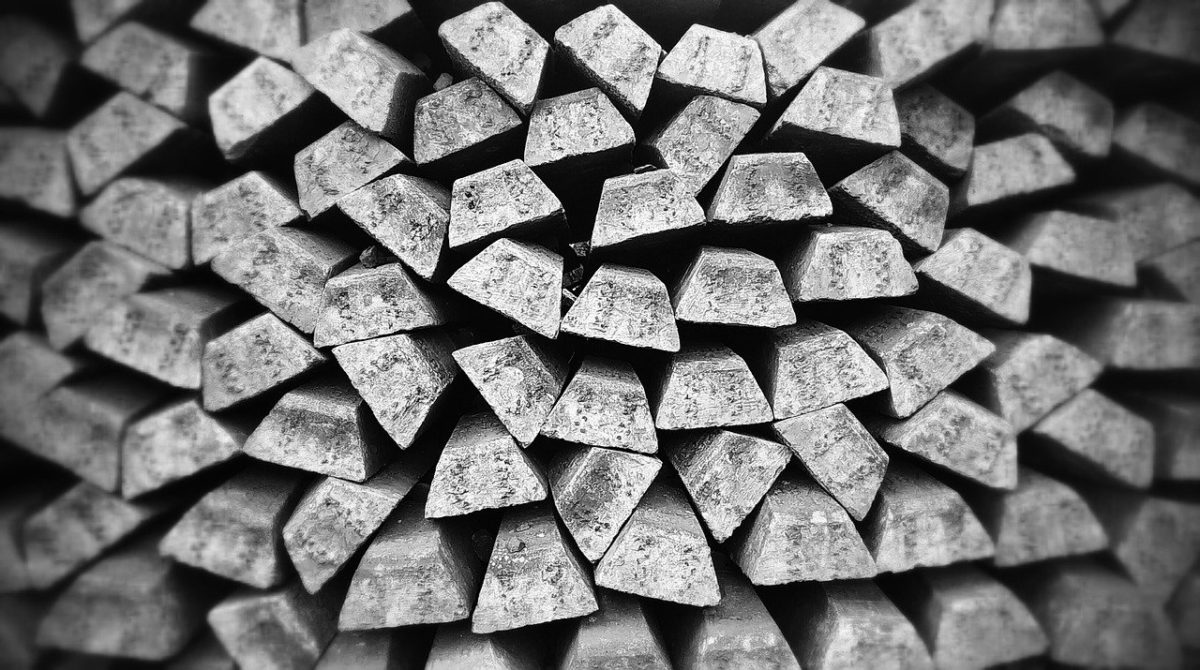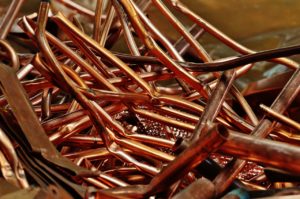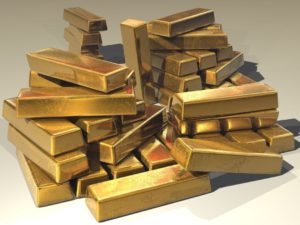Table of contents
Should I trade gold or silver?
Silver or gold after all - silver, also known as the "little man's gold", is attracting a lot of interest on the financial markets. There is no question about it: commodities trading/commodities trading, especially silver, enjoys great popularity. The market mechanisms for silver hardly differ from those of its noble sister gold: In principle, the price is determined by supply and demand. Commodities like silver can be very volatile - including violent price fluctuations. Trading with so-called silver CFDs often offers a good opportunity to profit from strong fluctuations in the silver price to a particular extent. Trading with silver requires detailed considerations due to occasionally high market volatility as well as a wide range of available instruments (e.g. CFDs, futures, stocks).
Uses for silver
For a long time, silver was only in demand as a pure financial investment. But in the meantime, the precious metal has become much more attractive and has developed into a fully-fledged industrial metal - it is considered indispensable for some future trends such as e-mobility and photovoltaics. There are undoubtedly numerous uses for silver.
The oldest use of silver is as a means of payment - as silver coins. Nowadays, silver coins are only issued in Germany for commemorative, collection or investment purposes, but not as a means of payment. Silver coins, silver bars as well as silver jewelry & Co. as an investment are in great demand, especially in times of crisis - the so-called "silverware" is almost legendary. This is because the earth's silver reserves are actually finite and silver has proven to be stable in value.
Industry is also interested in silver and needs the precious metal for its production. The chemical and cosmetics industries make use of the special properties of silver in their ointments, deodorants and medicines. But also such objects as knives, water filters and refrigerators can be treated via silver-containing coatings - including the conferral of antibacterial properties.
Furthermore, the precious metal silver appears predestined for orthopedic nails as well as implants and joints and dental applications. So-called silver nanoparticles have already been used in medicine, as well as in the paint/lacquer industry. Other technical applications include electrical contacts and electrodes as well as batteries and conductive pastes. The use of silver in the field of photography should also not be forgotten: silver compounds form the light-sensitive layer for photographic and film paper.
Occurrence and mining of silver
The size of the resources and also the stocks proves to be the basis in terms of estimating the silver price. According to experts, there are still about 560,000 tons of silver worldwide. At present, 270,000 tons are considered to be economically viable reserves. This means that silver - based on current consumption with corresponding annual growth rates - should last for another 24 years.
This resource range is influenced by the technical progress of various exploration and production techniques, but also by the expected precious metal prices and the economically mineable reserves. Further influencing factors such as the respective granting of official mining permits and the financing of planned mining projects are added.
Be that as it may, however, the range of resources will continue to be subject to fluctuations that should not be underestimated - not least because the extent of as yet undiscovered resources can hardly be estimated with any precision.
In principle, silver is mined on all continents - with the exception of the Arctic and Antarctic. The absolutely most important silver deposits are located in Mexico, Peru and China - this is where by far the highest quantities of silver are mined. Other productive deposits can be found in Australia, Chile, Russia, Bolivia, the USA, Canada and Poland. Even in Germany, silver deposits were and are found - especially in the Ore Mountains, the Harz Mountains, but also in the Black Forest.
The silver price and its influencing factors
The silver price is the so-called market price for silver. The latter results from the worldwide interaction of the parameters supply and demand. The majority of the silver price is quoted in USD. In addition to the dollar exchange rate, interest rates and the oil price, the prices of other precious and semi-precious metals such as gold, platinum, copper, etc. have emerged as decisive influencing factors. Emotions should not be forgotten either - they also play a role on the commodity exchanges that should not be underestimated: political events, inflation fears, speculation and long-term expectations all have an impact on the price of silver.
However, the impact of one major factor influencing the silver price trend can hardly be overestimated - speculation on the respective futures markets. Supply and demand - that is one side of the coin. Speculation on the futures markets - that is the other side of the coin. On the futures markets, almost unimaginable sums of precious metal investments are "turned": It is gambled via futures, various forward transactions on silver and gold, respectively - although these precious metals do not really exist. The worldwide trading volumes prove to be enormous - as a consequence, the enormous speculations on the futures exchanges influence the precious metal quotations.
In contrast to gold, silver is much more in demand from industry. Almost half of the demand for silver comes from industry, especially from the electrical industry. As demand for electromobility, renewable energies and semiconductors continues to rise, the price of silver could increase sharply in the future. However, it is also dependent on the global economy and fluctuates more strongly than gold in this respect.
Seasonality of the silver price
The seasonality of the silver price is striking - it is very different from that of the gold price. The precious metal silver records the biggest price gains at the beginning of the year. The trend towards a strong increase from January to the end of April is striking. After that, a seasonal correction sets in until the end of June. This is followed by a moderate upward movement that lasts until the end of December.
The striking seasonal increase in the price of silver, especially at the beginning of a year, is due to certain processes: For example, the industry, i.e. silver processors and silver users, buys silver in large quantities during this period. As a rule, the silver price starts to fall as early as March/April until it reaches a low in the middle of the year.
Silver forecast: development of the silver price until 2025
Where will the silver price go by 2025? Of course, the forecast for the silver price up to 2025 also depends to a not inconsiderable extent on supply and demand.
However, the "hybrid position" of silver with a high industrial dependency AND store of value has great potential in terms of price development. On the one hand, silver would also profit from high quotations of the precious metal gold. On the other hand, silver as an industrial metal would show in an increase in demand when a new global upswing sets in.
What is interesting about global silver production in recent years is the plateau that we have seen in recent years. Silver production has stagnated at around 25,000 tons per year since 2011. With the expansion of renewable energy, silver demand will continue to rise. The only question is, can silver production be increased fast enough? The stagnation of recent years suggests that little investment has been made in developing new silver mines. A rapid increase in demand could therefore have a positive effect on the silver price.
Advertising:
Klicken Sie auf den unteren Button, um den Inhalt von marketools.plus500.com zu laden.
Risk note Plus500: 82% of CFD retail investor accounts lose money.
How to trade silver?
Many beginners do not know how to profit from the price of silver. One way to trade silver is with the help of CFDs. A so-called contract for difference (CFD) is basically a type of contract between the two parties, the trader on the one hand and the broker on the other.
The use of a so-called CFD leverage leads to a multiplication of the invested capital. The leverage effect allows a trader to execute an order that is higher than his equity. But the maximum amount of leverage is limited depending on the asset class and strictly regulated by the EU. For commodity CFDs, the maximum standard leverage is 10:1. The special leverage effect of CFDs involves high profit potential on the one hand, risk of loss on the other.
CFDs, just like other financial instruments, carry a certain risk. Nevertheless, they prove to be transparent. Already from a deposit of 100 euros is possible with many brokers the entry. Before CFD trading, you should intensively deal with the special mode of operation of CFDs. For this you can also study the educational offers in the form of CFD articles, detailed analyses, instructions, strategies as well as useful tips from professionals. You can also find this basic information in our CFD education category.
Attractive silver shares
An interesting silver share is undoubtedly SSR Mining - via merger with Alacer Gold there is a lot of potential here. The merger, which took place at the end of 2020, took the form of a merger of equal partners. The new company reaches a market capitalization of about USD 3 billion. The merger aims at cost savings and synergy effects.
According to analysts' estimates, the two companies complement each other perfectly in principle, and financial strength has increased significantly following the merger. Thus, further mining activities can be financed. No question: SSR Mining has catapulted itself into the second league of promising gold and silver producers via the merger with Alacer Gold. Last but not least, profitability should also increase.
Another exciting silver stock that you should pay special attention to is that of Pan American Silver, one of the largest silver producers in the world. Pan American Silver is a mining company based in Canada that operates silver mines in Latin America (for example, Mexico, Bolivia, Peru, Argentina). In fact, after acquiring Tahoe Resources, Pan American Silver has become the largest silver producer in the world. The annual production volume is about 20 million ounces. At a share price of USD 32, Pan American Silver has a market capitalization of about USD 7 billion. Analysts are very confident that sales and silver production could increase. In 2022, according to market experts, about USD 2.46 earnings per share should be achieved on sales of USD 2.16 billion. These expectations should encourage potential investors.
Advantages of trading via silver CFDs
There's no question about it: silver is one of the most trusted assets on the global market. If you want to trade commodities, you can't avoid silver: Further rising commodity prices, plus rising inflation could provide excellent conditions for price increases in silver & co. and thus encourage to trade silver.
CFD trading with its long/short positioning proves to be enormously flexible - more flexible than all other forms of trading. With CFDs, trading is possible on more than 17,000 different markets - including stocks and indices as well as commodities, forex & co. What's more, you can even trade some markets outside normal trading hours.
Risk note Plus500: 82% of CFD retail investor accounts lose money.
Plus500 risk note: CFD are complex instruments and come with the high risk of losing money quickly because of the leverage effect. 82% of retail investor accounts lose money trading CFDs with this provider. You should consider whether you understand how CFD work and whether you can afford to take the high risk of losing your money.










